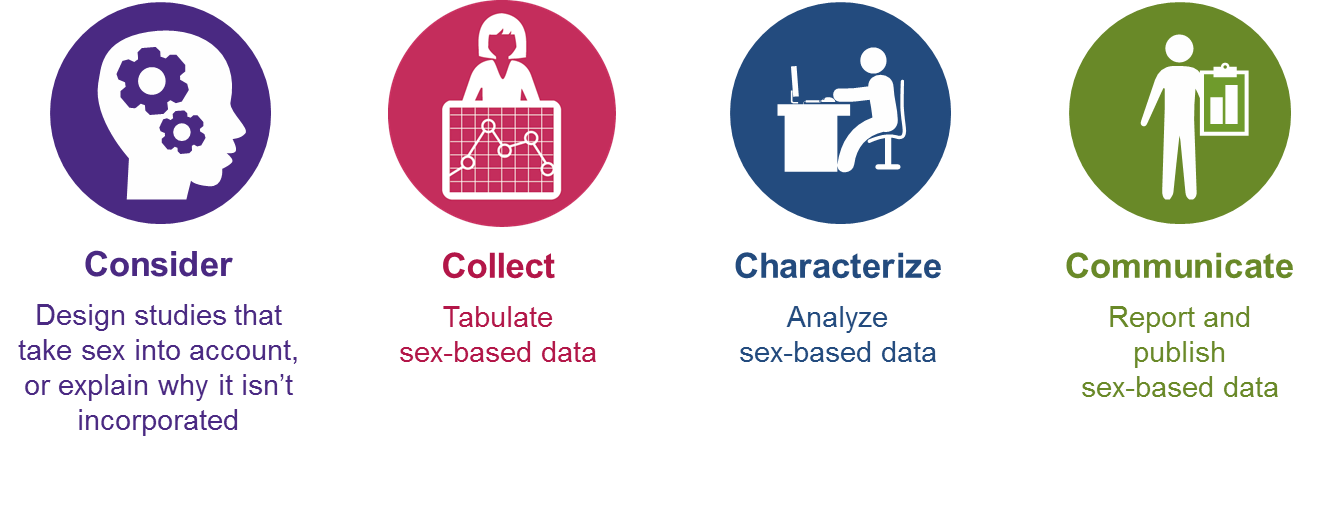Women now account for roughly half of all participants in NIH-supported clinical research, which is subject to NIH's Policy on the Inclusion of Women in Clinical Research. However, more often than not, basic and preclinical biomedical research has focused on male animals and cells. An over-reliance on male animals and cells may obscure understanding of key sex influences on health processes and outcomes.
Accounting for sex as a biological variable begins with the development of research questions and study design. It also includes data collection and analysis of results, as well as reporting of findings. Consideration of sex may be critical to the interpretation, validation, and generalizability of research findings. Adequate consideration of both sexes in experiments and disaggregation of data by sex allows for sex-based comparisons and may inform clinical interventions. Appropriate analysis and transparent reporting of data by sex may therefore enhance the rigor and applicability of preclinical biomedical research.
NIH expects that sex as a biological variable will be factored into research designs, analyses, and reporting in vertebrate animal and human studies. Strong justification from the scientific literature, preliminary data, or other relevant considerations must be provided for applications proposing to study only one sex. Investigators are strongly encouraged to discuss these issues with NIH program staff prior to submission of applications. In June 2020, the Journal of Women’s Health published “Sex as a Biological Variable: A 5-Year Progress Report and Call to Action,” an article commenting on the development and implementation of NIH’s SABV policy, which went into effect in January 2016. Further information regarding NIH expectations for the consideration of sex as a biological variable is provided in this guidance document.
The 4 Cs of Studying Sex to Strengthen Science
In order to advance our knowledge of the influences of sex and gender in health and disease, researchers must account for sex and gender in their research design and reporting. Several journals have begun adding guidance for sex and gender based reporting to their information for authors, such as Cell and Lancet journals. These serve as helpful examples for the scientific community.


